Influencers future-proof businesses as scepticism grows
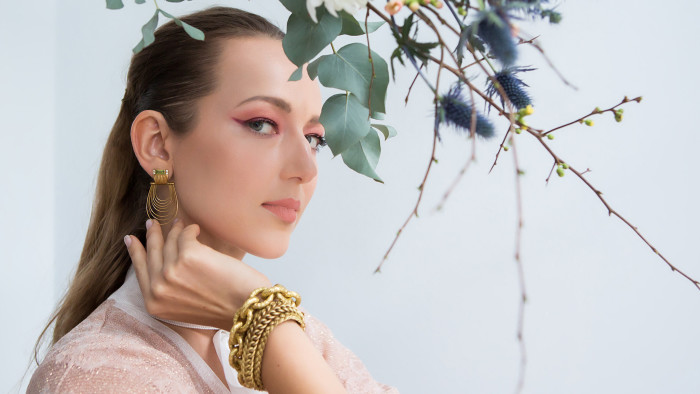
“There is a train of thought emerging that being an influencer or blogger is easy, and in the case of fast fashion and affordable beauty, certainly it can be — all you need is a good camera and a bit of charisma,” says Kathryn Bishop, deputy foresight editor and luxury expert at consultancy The Future Laboratory.
“But when it comes to high jewellery, precious stones and the portrayal of these beautiful products and heritage brands, it’s not an easy feat.”
In 2017 there were 21.7m brand-sponsored influencer posts on Instagram alone, according to data collected by agency Mediaklix — though with undisclosed paid-for posts rife, this figure is likely to be higher in reality. The number is forecast to rise to 32.3m this year, a projection that is likely to soothe those still in the game.
But scepticism is growing. Bots, fake followers and thinly veiled sponsored posts foster mistrust among social media users.
Marketing consultancy Influencer Intelligence recently polled 500 US and UK adults under the age of 35. It found that for 44 per cent of respondents, whether an influencer’s content is “real” is their number-one concern, while 37 per cent were concerned about phoney followers.
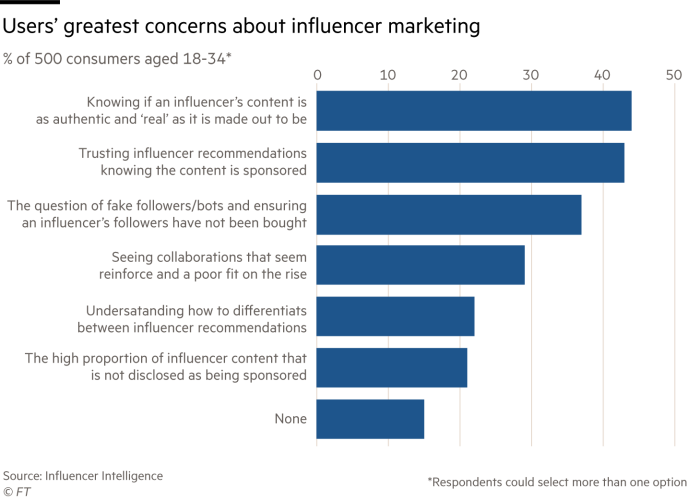
Amid the slide in the sector’s credibility, many influencers are now seeking more stable roles within the jewellery industry and are diversifying to become multi-faceted businesses.
Many bloggers who have studied gemmology or previously worked in the industry are exploring a move away from the influencer label as it loses credibility, Ms Bishop says.
“It makes sense that they might want to shed this moniker and position themselves as something more professional than a 20-something modelling Asos’s latest ‘drop’” of new items for sale, she adds.
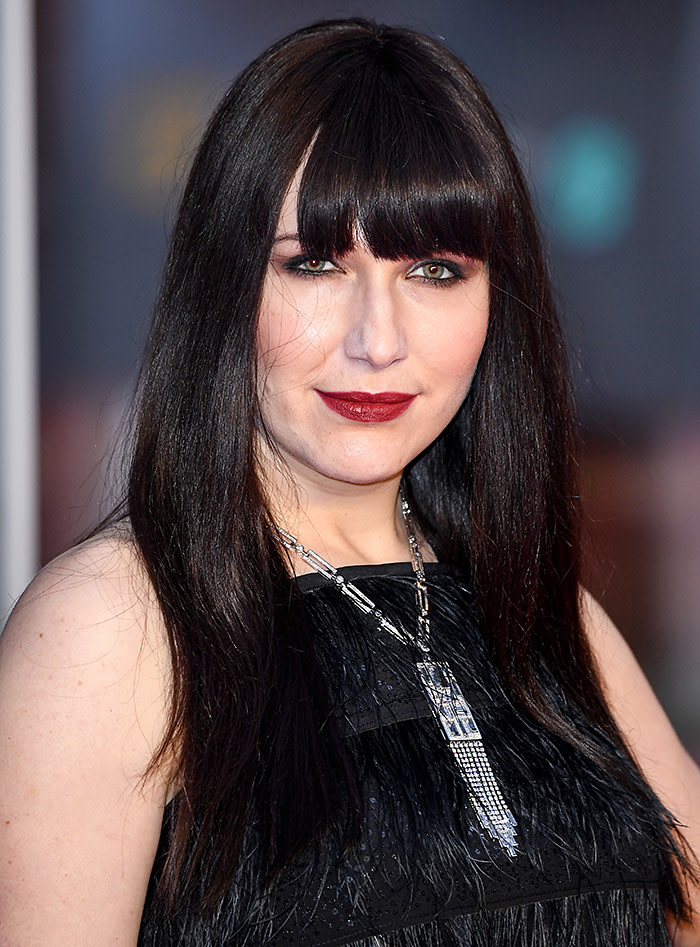
One example is the eponymous founder of KaterinaPerez.com, a site dedicated to high-end jewels. In September, Ms Perez picked up the award for UK Social Influencer at the Jewellery Blog Awards — though she does not like to be classed as such.
“I call myself a jewellery writer,” insists Ms Perez, who has built an Instagram following of close to a quarter of a million and who has previously worked in retail roles for brands such as Tiffany & Co, Asprey and Chaumet.
“I’m a certified gemmologist with seven years in my field, my knowledge is deep,” she says.
Yet while there is still demand from brands for paid features on her site, a third of her time is now dedicated to other projects. Having built and maintained a strong social media following, Ms Perez recently launched a bimonthly newsletter to advise those within the jewellery trade on how to do the same. She also hosts educational seminars around the world on topics such as social media strategy and photography, and consults with jewellery brands on the creation of marketing content.
One social media star who is happy to be branded an influencer is Liza Urla, founder of the decade-old jewellery blog Gemologue. She has built a business that stretches beyond paid posts, winning ambassador roles with jewellers. This has enabled her to co-found jewellery-focused creative agency GemKreatives, which counts jewellers Monica Vinader, Daou Jewellery and The Rock Hound as clients.
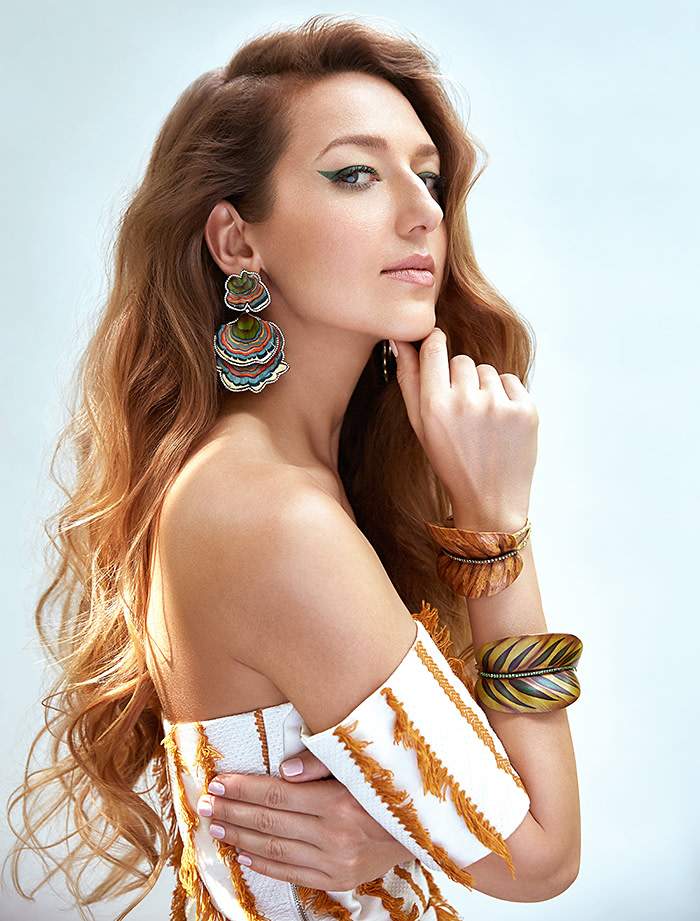
Blogging for a living is complicated and “tricky to navigate”, explains Ms Urla, who has just published her first book, Gemologue: Street Jewellery Styles & Styling Tips. “[GemKreatives] helps me to not only rely on the blogging world. I’m very happy to do [paid collaborations on Gemologue], blogging opens other revenue streams to girls like me. It empowers female entrepreneurship,” she says.
Some corners of the luxury sector have been slower to embrace digital than others, but traditional jewellery houses are realising the advantages of influencer collaborations.
“Working with the right influencer can be a great traffic and brand awareness driver,” says Louise Kahrmann, director of global marketing and communications at luxury jeweller David Morris, which has run several successful campaigns with jewellery influencers.
“We frequently see clients come in [to our stores] with Instagram screenshots of our jewellery. We recently had an inquiry for a magnificent 30ct white diamond cocktail ring after the client had seen a jewellery influencer post about it, during the recent presentation of our new high jewellery collection at Haute Couture week in Paris.”
Though some of jewellery’s digital tastemakers seem to be shoring up their enterprises by diversifying, not all feel that the influencer business model is on its way out.
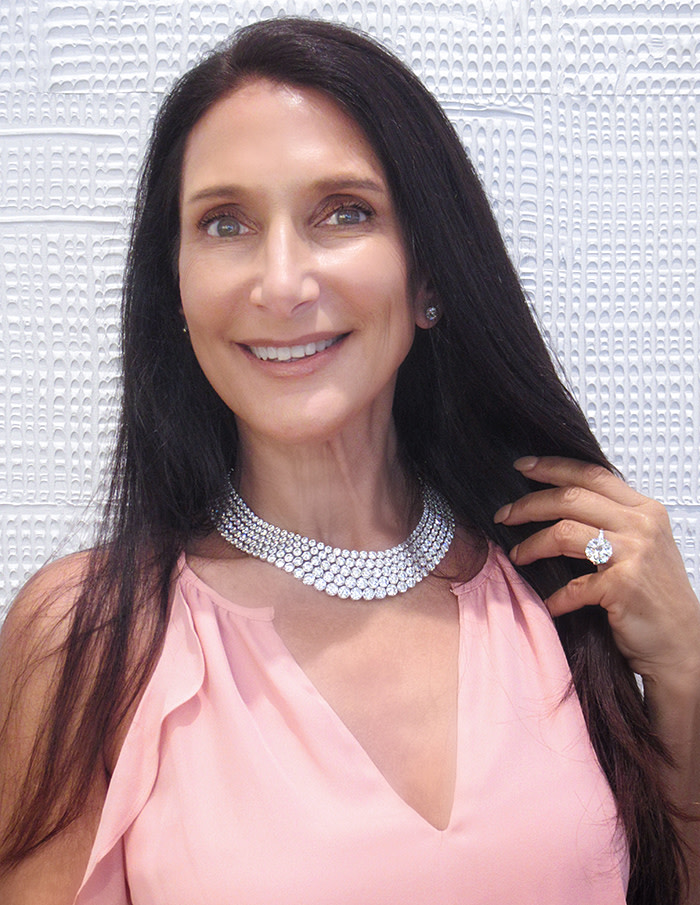
“Unequivocally, yes, you can make a living [as an influencer] if you are smart about what you’re doing,” says Tracey Ellison, whose passion for gems led her to create TheDiamondsGirl, a Miami-based site that has attracted nearly 615,000 followers on Instagram.
Yet while she says she still receives offers daily for paid partnerships, her business plan does not exceed 12 months. “That’s how quick things change,” she says.
Just in case, Ms Ellison has a back-up plan: she’s working on creating her own jewellery brand.
Comments